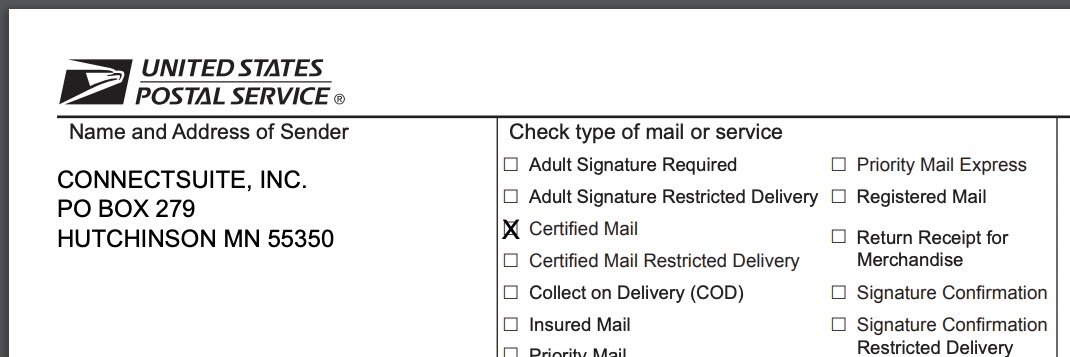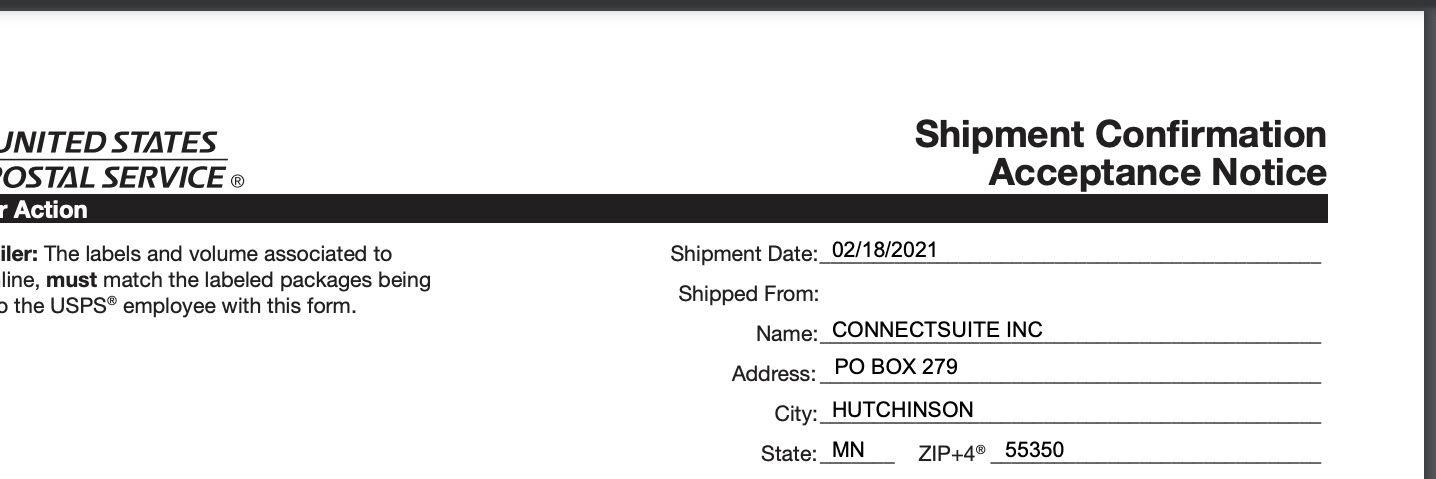Mailing Profiles
e-Certify / Help Center / Mailing Profiles
Overview
At the heart of e-Certify, the mailing profile integrates your organization’s mailing needs with the USPS. Selecting a mailing profile is the first step to the Mail Piece Creation process, auto-populating a number of fields and speeding up your workflow.
Explore Features
View mailing profiles
New Mailing Profile: Create a new mailing profile.

Edit an existing mailing profile.

Delete an existing mailing profile.

Clone an existing mailing profile.

Create a new mailing profile
Profile Information
- Profile Name: Name of the mailing profile
- Cascading Profile: This option is disabled by default and can be enabled in your Company settings. To learn more about cascading profiles, see the video tutorial below.
Assign Access: By assigning access, you’re deciding who can create pieces with the mailing profile. Location and department selections will also carry forward to Mail Piece Creation.
- User: Select All Users to make the mailing profile accessible by all users. By selecting a specific user, the mailing profile will be accessible by only the assigned user. Assigning a specific user supersedes location and department assignments.
- Location: By selecting a specific location, the mailing profile will be accessible by only users in that location. If a location is selected, you can click the Update USPS Info button to update fields in the USPS Information section below.
- Department: By selecting a specific department, the mailing profile will be accessible by only users in that department.
- Note: If both a location and department is selected, a user must meet both of those criteria to access the mailing profile.
- Note: Users who have the Filter By User display filter enabled in the user settings will only see mailing profiles assigned specifically to them and will only see pieces they created, regardless of any location or department assignments here. Learn more about display filters for Users.
- Example access configurations:
- All Users/All Locations/All Departments: This combination ensures the mailing profile will be accessible by everyone in your organization.
- All Users/All Locations/[Finance] Department: The mailing profile will be accessible by all users in all locations who are part of the Finance department.
- All Users/[New York] Location/All Departments: The mailing profile will be accessible by all users in all departments in the New York location.
Tracking Label
- Tracking Label: Choose a tracking label to be used with the mailing profile. Note that this can be changed as needed during Mail Piece Creation.
- Barcode Type
- IMPB 30 = 22 digit tracking number and slightly shorter barcode length (default)
- IMPB = 26 digit tracking number and slightly longer barcode length
- Return Address: Here, you can choose to select a return address for all mail pieces you create with this mailing profile. Addresses added to the System Address Manager will appear in this drop-down list. If left to System Default, your default return address will be used according to the sender/return address information below.
- Learn more about Tracking Labels.
Extra Services: Select the extra services you would like for all pieces created with the mailing profile. Note that these selections can be changed as needed during Mail Piece Creation.
- Certified Mail: Certified Mail provides the sender with a mailing receipt (when PS Form 3877 or PS Form 5630 is used at the time of mailing), tracking history, and, upon request, electronic verification that a mail piece was delivered or that a delivery attempt was made. The USPS also maintains a record of delivery (which includes the recipient’s signature). If the mailer would like a copy of the recipient’s signature, Certified Mail can be paired with the Electronic Return Receipt extra service.
- Restricted Delivery: Restricted Delivery allows the mailer to direct delivery of a piece only to the addressee or an authorized agent. It must be used in combination with Certified Mail. The Electronic Return Receipt extra service can also be used in conjunction with these extra services if the sender would like to receive a copy of the recipient’s signature.
- Electronic Return Receipt: The electronic return receipt, commonly referred to as a proof of delivery (POD), provides the mailer with evidence of delivery that includes a digital copy of the recipient’s signature.
- Certificate of Mailing: A Certificate of Mailing is a receipt that provides evidence that a mail piece has been presented to the USPS for mailing. It is an official record that includes the date the mail piece was accepted by the USPS. Certificate of Mailing cannot be combined with any other extra service offered in e-Certify.
- Lock so user cannot change on mailpiece creation screen: Lock your extra service selections so they cannot be changed during Mail Piece Creation.
USPS Information: When submitting pieces to the USPS, a shipping services file (SSF) is submitted to the USPS on your behalf to prepare the USPS for your mail pieces and activate the tracking number of each piece. The information here is required as part of the SSF. Note that Drop ZIP Code, Post Office of Mailing, and Post Office of Acct. ZIP Code are auto-populated with information from your Company address.
- Permit Number: Optional. This field is required as a header record in the SSF, though it can remain blank.
- Drop ZIP Code: ZIP Code of the post office where mail pieces will be dropped for mailing
- Post Office of Mailing: City, state, and ZIP Code of post office of mailing
- Class of Mail: Default = First Class. Note that Priority Mail is disabled by default and can be enabled in your Company settings. Learn more about using Priority Mail.
- Payment Method: Default = Smart Meter
- Type of Postage: Default = Metered
- Post Office of Acct. ZIP Code: 5-digit ZIP Code of post office issuing permit number, meter license, or precanceled stamp
- Package Type: Select a package type for mail pieces created with the profile
- Note: In order for the postage calculation to reflect the meter postage discount, Payment Method must equal Smart Meter or Other Meter and Package Type must equal Letter.
Email Notifications: Configure email notifications for all pieces created with the mailing profile. By default, notifications will be sent to the notification email of the user who created the mail piece.
- Notification Control: Select Use Profile Settings to lock your email notification settings so they cannot be changed during Mail Piece Creation. Alternatively, select Allow Users to Set to allow users to make changes.
- Enable Proof of Acceptance Email Notifications: Receive an email with the POA attached when the USPS accepts the mail piece.
- POA emails are generally received within 24 hours of the acceptance event.
- Enable Proof of Delivery Email Notifications: Receive an email with the POD attached after the mail piece is delivered and signed for.
- The USPS transmits proof of delivery (POD) files to ConnectSuite in several batches each Monday between 00:00-23:59. Note that ConnectSuite processes the PODs as the USPS makes them available, and it may take up to 24 hours to complete POD processing, make it available in e-Certify, and, if applicable, email it to you. In the event a POD is not available in e-Certify by the start of business Tuesday morning the week following the first Monday the POD was expected, please contact support for further investigation.
- Send notifications to alternate email address: If you would like to send email notifications to an alternate email address, check this box, and enter the email below. To send email notifications to multiple email addresses, separate them with a semicolon.

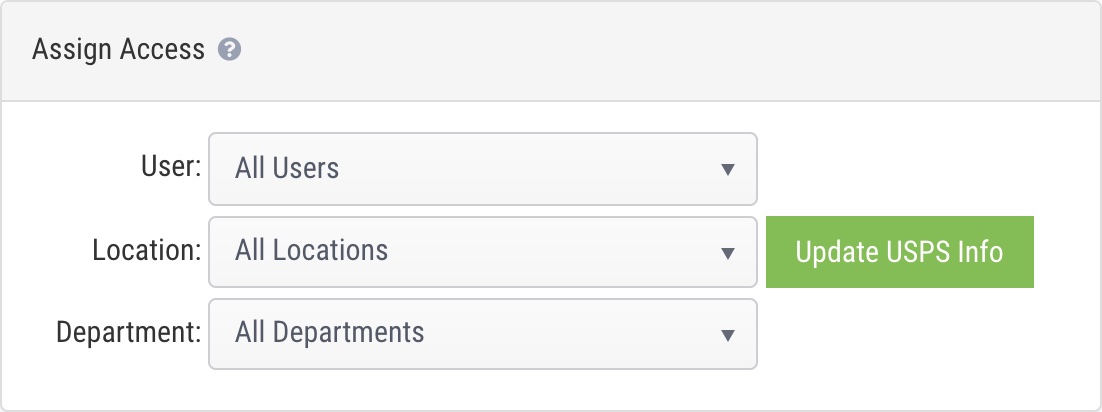
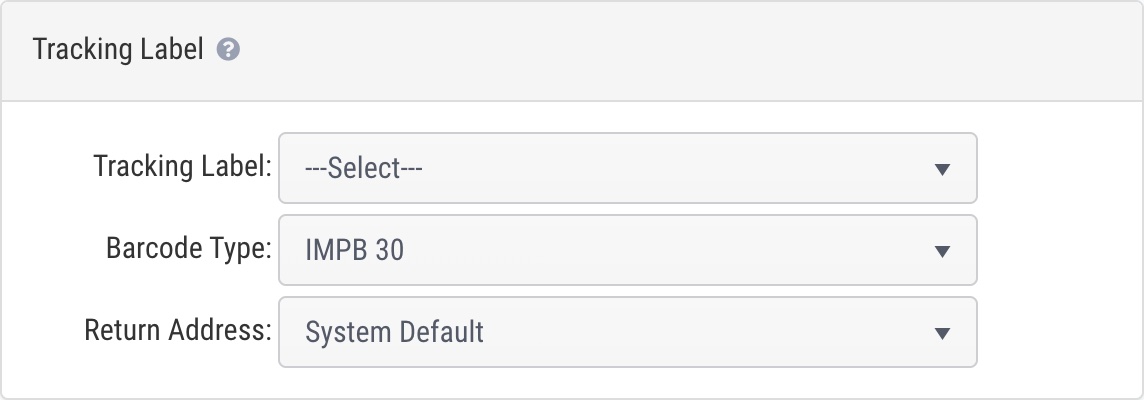

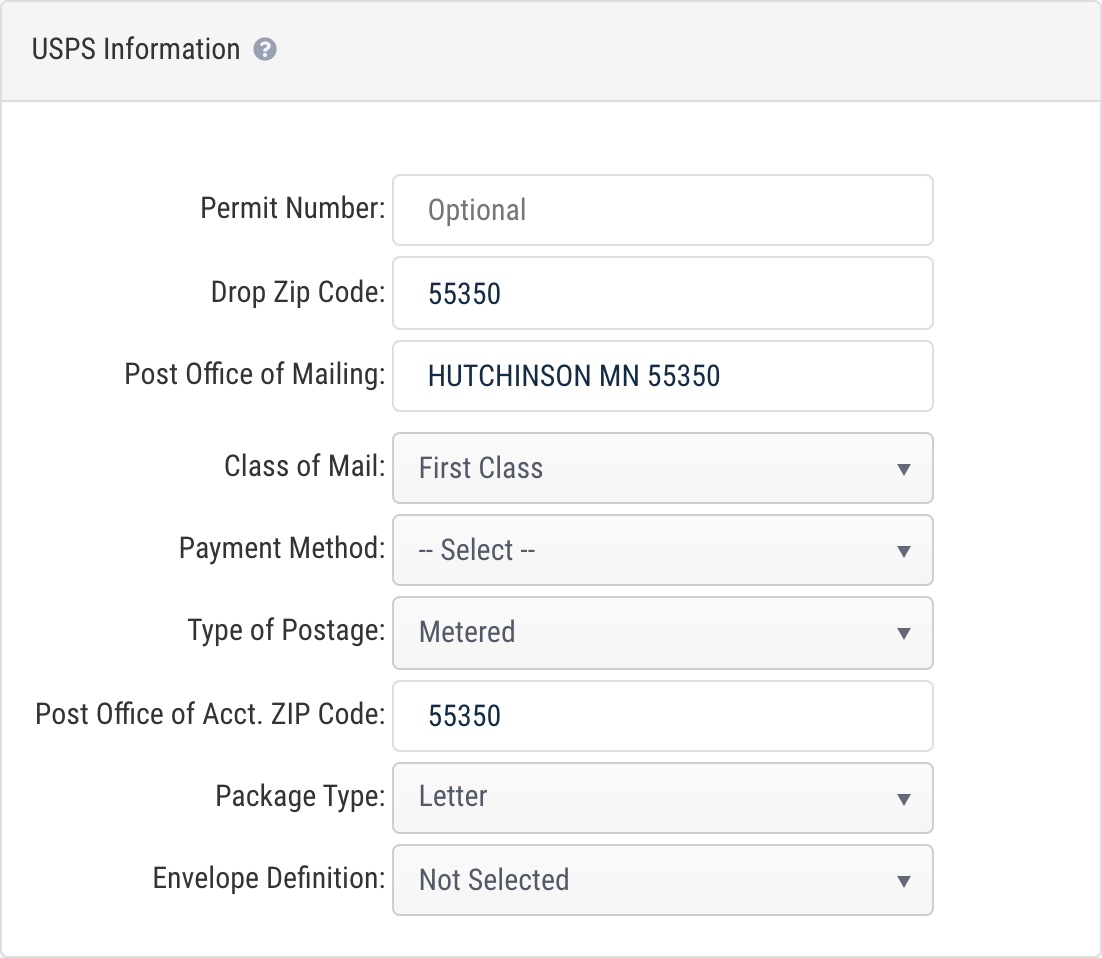
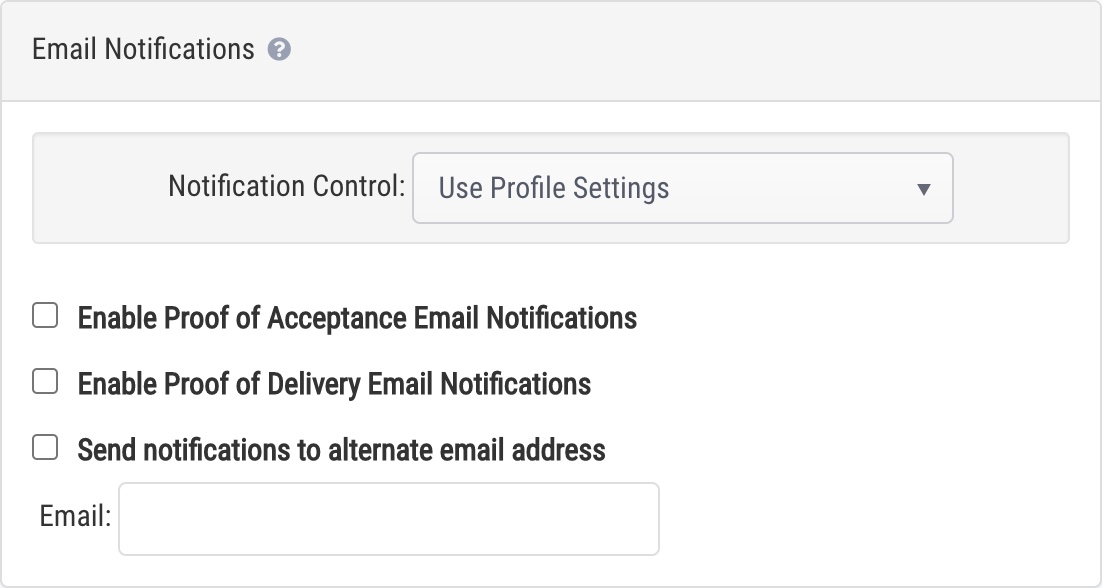
Sender/return address information
Your sender/return address is used in the following places:
- The sender/return address on the banner page
- The Name and Address of Sender field on PS Form 3877
- The Shipped From fields on PS Form 5630
The address used in these places is pulled from the following, in this order:
- Return address selected within mailing profile
- User address
- Location address
- Location selected during mail piece creation
- Location selected within mailing profile
- Company address

